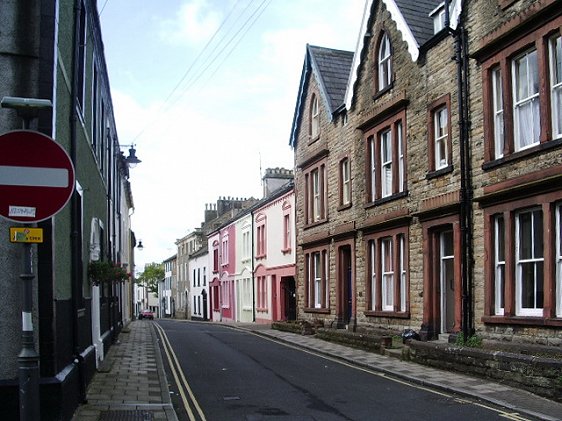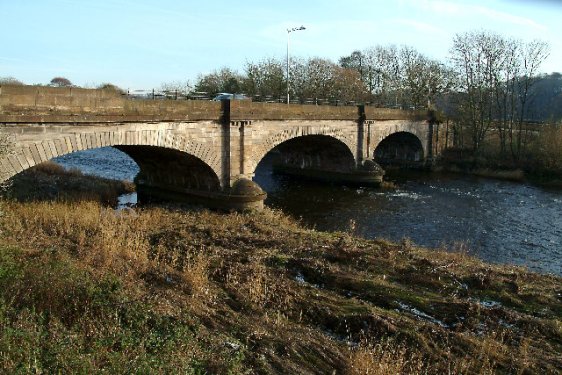 Workington, Cumbria, England: Source: https://commons.wikimedia.org/wiki/File:Curwen_Street,_Workington_-_geograph.org.uk_-_515492.jpg
Workington, Cumbria, England: Source: https://commons.wikimedia.org/wiki/File:Curwen_Street,_Workington_-_geograph.org.uk_-_515492.jpgAuthor: Alexander P Kapp

Workington is a small coastal town at the mouth of the River Derwent in Cumbria, England. Located about 52 km (32 miles) to the southwest of Carlisle, it has a population of 24,000 people (2012 estimate).
Human presence in the Workington area goes back to at least the Roman period. The Romans established forts all along the Cumbrian coast as a form of defence against attacks by the Scoti from Irealand and the Caledonii of Scotland.
After the departure of the Romans, the Workington area is believed to be a desolate wasteland littered with Roman ruins. It was not settled until the arrival of the Vikings. In the medieval period, Workington developed as a center for coal mining as well as for the iron and steel industries.
Iron ore was found in abundance to the south of Workington. The town had the world's first large-scale steelworks. It had the first commercially operated Bessemer converter, which operated until 1977, making it also the last to go out of use. The decline of the coal and steel industries brought massive unemployment to the area.
Today Workington is turning its sights to tourism as the main income earner. It stages cultural festivals to draw visitors. The town also has three theaters, providing it with a vibrant art scene.
 Calva Bridge, Workington: Source: https://commons.wikimedia.org/wiki/File:Calva_Bridge,_Workington.jpg
Calva Bridge, Workington: Source: https://commons.wikimedia.org/wiki/File:Calva_Bridge,_Workington.jpgAuthor: Phil Gravell

Visiting Workington
Take the M6 motorway until Penrith. From Exit 40, continue on the A66 road until you arrive in Workington.Places of Interest in Workington
- Burrow Walls: Site of the ruins of at least one Roman fort and Normal hall.
- Calva Bridge: Built in 1840, this is the oldest bridge in Workington.
 Latest updates on Penang Travel Tips
Latest updates on Penang Travel Tips

Copyright © 2003-2025 Timothy Tye. All Rights Reserved.

 Go Back
Go Back